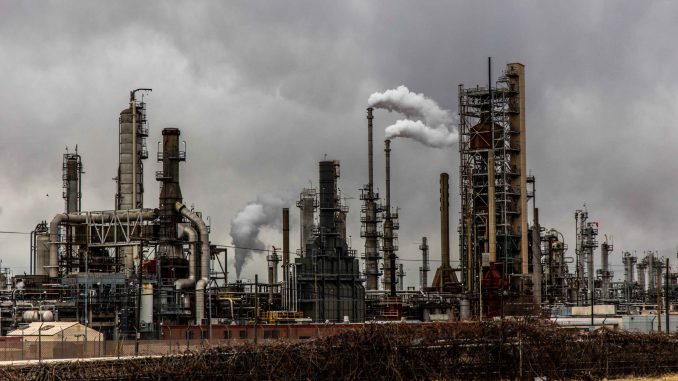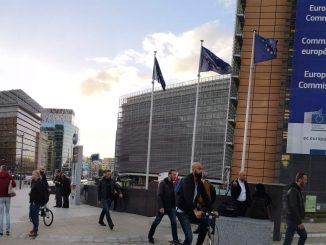
The second annual meeting of the Ministerial on Climate Action (MoCA) was held between the 20th and the 21st of June 2018, organized by the European Union, Canada and China and held in Brussels.
Artículo disponible en Español | Article disponible en Français
The aim of this meeting, held for the first time last year and now in it’s second edition, is to talk about the objectives of the Paris Agreement and key points of it, as well as discussing the upcoming UN climate conference held in December in Poland.
Let’s talk about climate change for a minute though, as this is the perfect occasion. Climate change and global warming have been a hot topic for many years, with many detractors, but recently, many people and governments have started to talk negatively of climate change, going as far as denying its existence. Which is fine, as it is currently only a theory (backed by a lot of data, though). For governments, sure, fighting against global warming and climate change can become quite expensive and lower the competitivity of the country in question. This is the argument US President Trump used to justify leaving the Paris Agreement, even if some of the US states have since decided to apply the Paris Agreement on their own.
Putting targets involves new rules for industry, forcing them to spend millions in upgrading their factories to cut emissions, such as by installing filters, filters that will have to be replaced every few years, and better, more efficient waste management, not allowing them to just dump their by-products in the nature/river. This can easily become expensive, and this expense will be passed on the consumer, with the end result being more expensive products, thus lowering the competitivity of the country, as it’ll be harder to export said products.
Outside the industry, fighting against climate change means constructing greener buildings, with better insulation and durable materials, which, in the long term, reduce power consumption due to better positioning of the building in question, less heating/cooling needed, etc. It also involves different, more efficient, light bulbs (LED usually), which are more expensive than the older incandescent bulbs upfront, but cheaper long term due to lower power costs and higher lifespan, better water conservation techniques to reduce water usage, solar panels on the roof in some cases/countries, and many other options. For cars, more efficient engines that consume less fuel and respect emission norms on NOx and CO2, the price difference can be of up to 6000 euros, which is hard to ignore. Electrical cars are more expensive overall than petrol or diesel cars, even if they are becoming more affordable overtime, and many governments offer tax cuts or discounts for purchasing greener vehicles.
Some of the most polluting sectors, such as aviation and shipping, have had to spend millions in developing more efficient engines, but we replace our car more often than a plane or ship is replaced (cars are usually replaced once every 10 years, containerships operate for 25 to 30 years, and planes fly for up to 30 years). According to numbers and predictions from the European Environment Agency, by 2050, 40% of global carbon dioxide emissions could come from the aviation and transport sectors, unless more mitigations are put in place. Currently, aviation accounts for 3% of all EU greenhouse emissions, and 2% of global emissions. Shipping accounts for 2.5% globally. The biggest producers of emissions are cars & trucks, with cars being responsible for 12% of EU’s CO2 emissions, vans a further 12% more, and heavy-duty vehicles such as trucks or buses account for 6% of EU’s CO2 emissions. Efforts and legislation have been put in place to try and tackle road pollution, in order to reduce emissions and improve air quality, but we’ve seen how some companies lied about their emissions, which probably affected the targets. Over the years we’ve also experienced a growth in transportation, with more freight vehicles on our roads, due to the popularity of e-commerce, which, even if the overall emissions of the EU have decreased over the past 26 years, transport emissions have been increasing over time.
Where are we trying to go with this? Sure, climate change and global warming are theories, backed by large amounts of data and simulations. What cannot be denied is that our activities as humans are having an effect on our environment, such as polluting the air with toxic fumes, leaking toxic products into the groundwater, rivers and seas, which ends up affecting the local wildlife and our health. Whether we like it or not, we have to reduce the pollution to improve ours lives, which, ironically, means working towards the Paris Agreement targets.
It is therefore a bit hard to understand why this sudden increase in climate denialists, especially amongst citizens, as it doesn’t affect them directly in most cases. It is also hard to understand why they are fighting against less pollution. Do these people desire having a factory emitting a suit of random toxic fumes that will affect their health, or leak chemicals into the river, contaminating their drinking water and killing or poisoning the fish they’ll eventually eat? There are times one can question if this is what they are wishing for, seeing how they are acting. Is short-term profit really better than having a liveable planet in 50 years?
Coming back to the meeting held in Brussels the 20th and 21st of June 2018, ministers and representatives of 35 different countries were present, discussing current policies for the Paris Agreement, as well as preparing for the next meeting in Poland. The current Paris Agreement is aimed at keeping the increase in global temperatures at below 2°C, targeting a 1.5°C increase as maximum.
During the meeting, the Climate Action and Energy Commissioner, Mr. Miguel Arias Cañete, announced the new targets EU negotiators obtained in various meetings, targets to be met by 2030 by the European Union, which are as follow:
- 32% renewable energy, up from 27% as original target
- 32.5% energy efficiency target, up from 30% originally
- This means the EU would be cutting its emissions from the original 40% planned to over 45% by 2030
The Commissioner closed the speech by pointing out that all countries should work together on trying to reduce their emissions, as the EU alone only represents a bit less than 10% of the global emissions. Currently, the top emitter is China, followed by the US, who made a lot of noise when Trump withdrew the country from the Paris Agreement back in 2017. The third largest emitter is the European Union (which is a bloc of 28 countries, after all). According to Eurostat numbers, between 1990 and 2016, the EU cut its emissions by 22%, but this comes with the drawback of an increase in emissions from the transport sector.
The full speech is available here.


